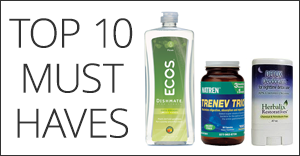- Diabetes , is a group of metabolic diseases in which a person has high blood sugar, either because the pancreas does not produce enough insulin, or because cells do not respond to the insulin that is produced. If you are diabetic, it means that there is an excessive amount of glucose (sugar) in your blood. According to the American Diabetes Association (ADA): “25.8 million children and adults in the United States 8.3% of the population have diabetes.” If you have diabetes you should make sure to avoid foods that are high in sugar.
- Including certain foods in your diet can help reduce the risk of complications with diabetes.
- Here are some foods tips to help you create a healthier diet:
- As a general rule:
- Watch your serving sizes to keep the complications of diabetes in check. A dietitian or health practitioner should advise you on how many servings from each food group you should eat per day. For the most health benefits buy fresh produce in season.
- Moderation is key.
- According to the American Diabetes Association: Eat 3 to 5 servings of fresh vegetables which are packed with antioxidants.
- Fruits have also the same advantages as vegetables. They are high in fiber and loaded with antioxidants.
They contain natural sugar and less calories than most vegetables. Eat 2 to 4 servings a day. - Avocados:
- Avocados are a powerful super fruit for diabetes. They are high in fiber, water, and monounsaturated fats. These ingredients are all helpful in lowering blood sugar and removing acids from the body. Avocados are known to help prevent cataracts and macular degeneration, which are a few of the complications of diabetes. The vitamin E in avocados helps keep blood vessels healthy.
- Fish:
- According to the American Diabetes Association: Eat 2 to 3 servings per day.
- More studies link the consumption of fish rich in omega-3s and lowering the risk of diabetes. While we lack clear proof that diets high in marine omega-3s can prevent or treat diabetes, there is some animal evidence that omega-3s help control blood sugar and ample evidence that omega-3s reduce risk factors for the heart disease that often develops in response to chronic diabetes. And it’s a fact that people who eat a lot of fish—like the Japanese enjoy lower rates of diabetes.
- Beans:
- One of the most important things to avoid when dealing with diabetes is carbohydrates. According to ADA: “If you eat more carbohydrate than usual, you can expect your blood glucose levels to be higher than usual. Likewise, if you eat less, you can expect your blood glucose levels to be lower.” Beans are low in carbs, and because of their high fiber, they regulate insulin and reduce blood sugar.
- Quality High protein:
- High protein foods are excellent sources of nutrition for individuals with diabetes.
- Pastured chicken: The skinless breast part is recommended.
- Pasture eggs are also a good choice.
- Nuts:
- They’re loaded with ‘good’ fats that fight heart disease. These fats have even been shown to help reduce insulin resistance and make blood sugar easier to control.
- For more on eggs.
- For more on pastured poultry.
- Note: None of the information in our website is intended to diagnose, treat, cure or prevent any illness or disease. The content on our website is for educational purposes only.
- SOURCES:
- 1. “Diabetes Superfoods.” American Diabetes Association. N.p., n.d. Web. 23 Feb. 2013.
- 2. Board, A.D.A.M. Editorial. “Diabetes Superfoods.” PubMed Health. A.D.A.M. Medical Encyclopedia., 27 June 2012. Web. 23 Feb. 2013.
- 3. “Diabetes Statistics.” American Diabetes Association. N.p., n.d. Web. 23 Feb. 2013.
- 4. “Carbohydrates and Diabetes.” American Diabetes Association. N.p., n.d. Web. 23 Feb. 2013.
- 5. Borkman M, Chisholm DJ, Furler SM, Storlien LH, Kraegen EW, Simons LA, Chesterman CN. Effects of fish oil supplementation on glucose and lipid metabolism in NIDDM. Diabetes. 1989 Oct;38(10):1314-9.
- Wedmd.com

Top foods for diabetes
by Stepy —
July 5, 2019
Join Our Newsletter!
By submitting this form, you are consenting to receive marketing emails from: . You can revoke your consent to receive emails at any time by using the SafeUnsubscribe® link, found at the bottom of every email. Emails are serviced by Constant Contact
















